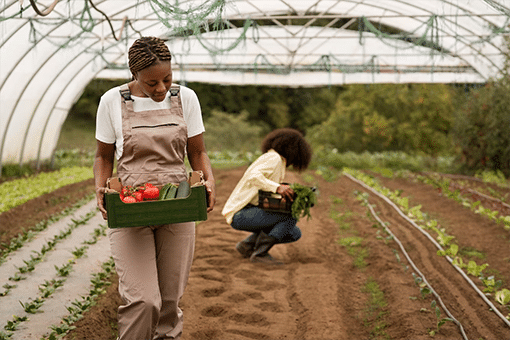Difference between extensive and intensive farming
Extensive and intensive farming are two distinct approaches to agricultural practices that differ in their methods, scale, and goals. These approaches have evolved in response to population growth, technological advancements, and environmental considerations. Let’s explore the differences between extensive and intensive farming in detail.
-
Definition:
-
- Extensive Farming: Extensive farming is a farming method that involves the use of large areas of land with relatively low inputs of labor, capital, and technology per unit of land. The focus is maximizing land use efficiency rather than maximizing output per unit area.
- Intensive Farming: Intensive farming, on the other hand, refers to a farming system that involves the high input of labor, capital, and technology per unit of land. It aims to maximize output per unit area, often utilizing smaller land areas but with higher productivity.
-
Land Use:
-
- Extensive Farming: Extensive farming typically requires large land areas to accommodate extensive production systems. Farmers practicing extensive farming have significant amounts of land available and utilize it to keep livestock or cultivate crops extensively.
- Intensive Farming: Intensive farming utilizes smaller land areas and focuses on maximizing productivity through intensive management practices. It often involves techniques such as high-density crop planting, controlled environments, and use of advanced technologies to optimize production per unit of land.
-
Labor and Capital:
-
- Extensive Farming: Extensive farming relies on a lower input of labor and capital compared to intensive farming. The emphasis is on utilizing natural resources and minimizing human intervention. For example, extensive livestock farming may involve free-range grazing, where animals are left to roam over large areas with minimal human supervision.
- Intensive Farming: Intensive farming requires a higher input of labor and capital. Advanced machinery, irrigation systems, fertilizers, and pesticides are commonly used. Intensive livestock farming involves confinement of animals in smaller spaces, with increased feeding and monitoring to maximize productivity.
-
Productivity and Output:
-
- Extensive Farming: Extensive farming generally yields lower productivity and output per unit of land as compared to intensive farming. The focus is on utilizing vast land areas, often resulting in lower yields but with reduced inputs and costs.
- Intensive Farming: Intensive farming aims to achieve higher productivity and output per unit of land. By employing advanced techniques and technologies, farmers can maximize crop yields, animal production, and overall profitability.
-
Environmental Impact:
-
- Extensive Farming: Extensive farming practices can have a relatively lower environmental impact compared to intensive farming. The extensive use of land allows for more natural resource availability, reduced chemical inputs, and lower energy consumption. However, if practiced without proper management, extensive farming can still lead to deforestation, soil erosion, and habitat degradation.
- Intensive Farming: Intensive farming practices often require higher inputs of synthetic fertilizers, pesticides, and energy, which can lead to environmental concerns. Water pollution from runoff, soil degradation, and excessive use of chemical inputs are potential issues associated with intensive farming. However, advancements in sustainable and precision farming techniques are being employed to mitigate these negative impacts.
-
Scale and Economic Considerations:
-
- Extensive Farming: Extensive farming is often practiced on large-scale agricultural operations, where land is more readily available and less expensive. It is commonly found in regions with ample land resources, such as extensive cattle ranches in Australia or large-scale wheat farming in the Great Plains of the United States.
- Intensive Farming: Intensive farming is more prevalent in areas with limited land availability or where land prices are high. It allows farmers to achieve higher production levels in smaller spaces, making it suitable for densely populated regions or urban areas with limited agricultural land.
It is essential to note that extensive and intensive farming are not mutually exclusive, and there are often elements of both approaches employed in modern agricultural systems. Many farmers use a combination of extensive and intensive practices based on their specific circumstances, market demands, and sustainability goals.
In conclusion, the choice between extensive and intensive farming depends on available land, labor, capital, environmental considerations, market demand, and the farmer’s objectives. Both approaches have their advantages and disadvantages, and striking a balance between productivity, sustainability, and environmental stewardship remains a crucial goal for modern agriculture.
You can also learn more about Semi-intensive poultry housing system here

